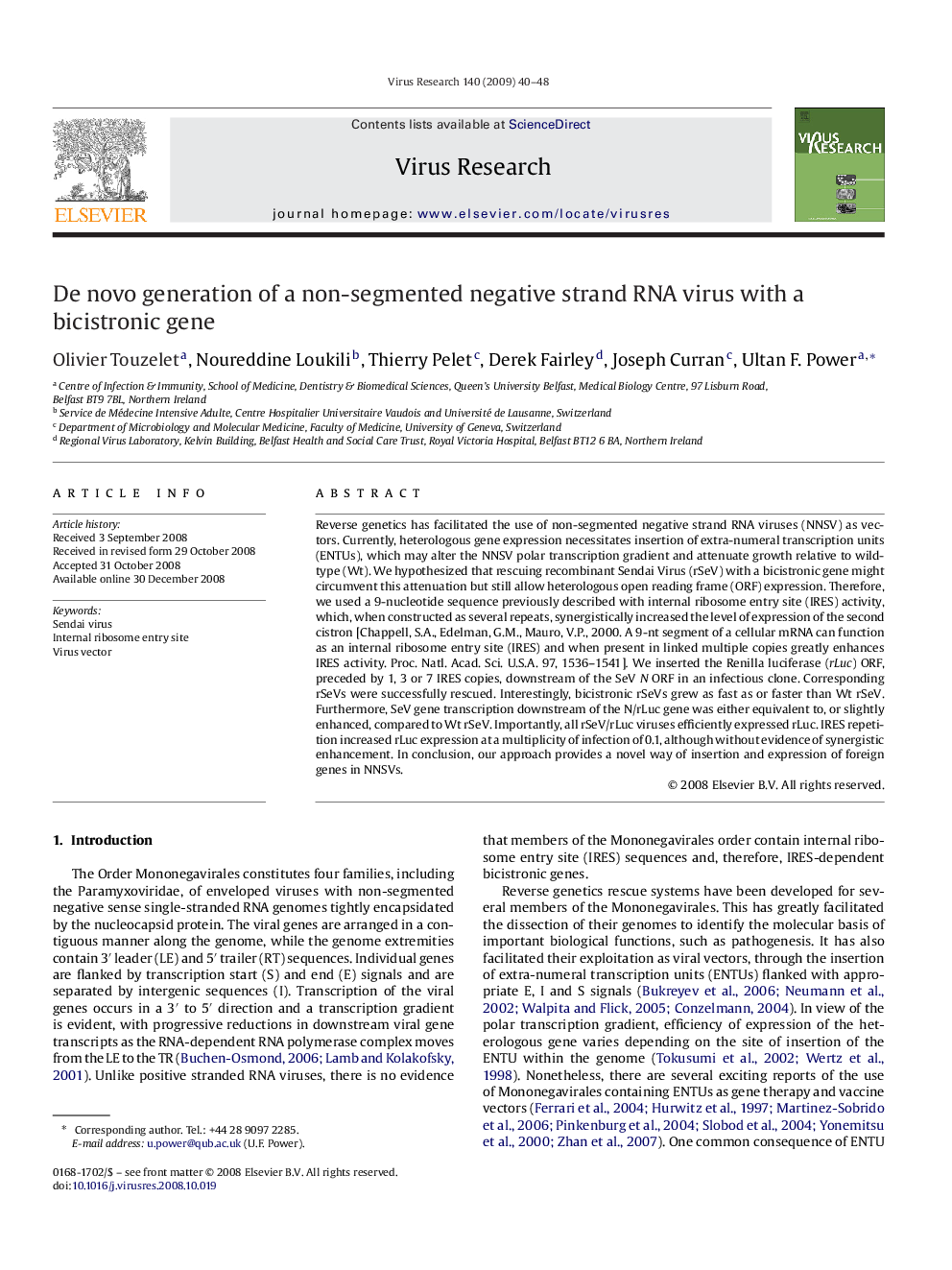| Article ID | Journal | Published Year | Pages | File Type |
|---|---|---|---|---|
| 3429923 | Virus Research | 2009 | 9 Pages |
Reverse genetics has facilitated the use of non-segmented negative strand RNA viruses (NNSV) as vectors. Currently, heterologous gene expression necessitates insertion of extra-numeral transcription units (ENTUs), which may alter the NNSV polar transcription gradient and attenuate growth relative to wild-type (Wt). We hypothesized that rescuing recombinant Sendai Virus (rSeV) with a bicistronic gene might circumvent this attenuation but still allow heterologous open reading frame (ORF) expression. Therefore, we used a 9-nucleotide sequence previously described with internal ribosome entry site (IRES) activity, which, when constructed as several repeats, synergistically increased the level of expression of the second cistron [Chappell, S.A., Edelman, G.M., Mauro, V.P., 2000. A 9-nt segment of a cellular mRNA can function as an internal ribosome entry site (IRES) and when present in linked multiple copies greatly enhances IRES activity. Proc. Natl. Acad. Sci. U.S.A. 97, 1536–1541]. We inserted the Renilla luciferase (rLuc) ORF, preceded by 1, 3 or 7 IRES copies, downstream of the SeV N ORF in an infectious clone. Corresponding rSeVs were successfully rescued. Interestingly, bicistronic rSeVs grew as fast as or faster than Wt rSeV. Furthermore, SeV gene transcription downstream of the N/rLuc gene was either equivalent to, or slightly enhanced, compared to Wt rSeV. Importantly, all rSeV/rLuc viruses efficiently expressed rLuc. IRES repetition increased rLuc expression at a multiplicity of infection of 0.1, although without evidence of synergistic enhancement. In conclusion, our approach provides a novel way of insertion and expression of foreign genes in NNSVs.
